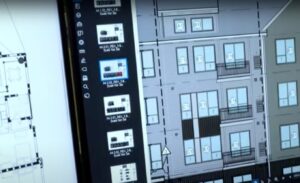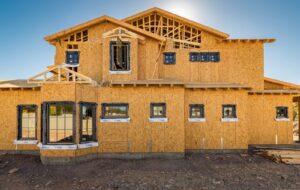Services
Flowless services
Our top notch services
“In the world of construction, the blueprint may be the map, but pre-construction is the compass. It guides us, ensuring that every nail, every beam, and every angle align perfectly to create structures that stand the test of time.”
Our features
Ask your questions about our services
Pre-construction in framing is a critical phase in the construction process where the groundwork is laid for a successful building project.
Pre-Construction in Framing: Building the Blueprint for Solid Structures
Pre-construction in framing is a critical phase in the construction process where the groundwork is laid for a successful building project. During this stage, careful planning, precise measurements, and strategic decision-making set the foundation for a structurally sound and aesthetically pleasing framework.
What is it?
Pre-construction in framing is essentially the phase of a construction project that occurs before the actual framing begins. It’s all about detailed planning and logistics to ensure the framing process runs smoothly. This stage is essential for preparing the project’s design, understanding structural requirements, and making crucial decisions regarding materials and layout.
What is the process like?
The pre-construction process in framing involves several key steps:
- Design and Blueprint Development: This is where the project’s design is created, including the layout and specifications for the frame. Architects and engineers work together to develop detailed plans.
- Material Selection: Decisions are made regarding the type of wood or steel to be used for the frame, considering factors like load-bearing capacity and durability.
- Cost Estimation: Accurate cost estimates are prepared for the materials, labor, and equipment needed for the framing process.
- Permit Acquisition: Necessary permits are obtained from local authorities to ensure compliance with building codes and regulations.
- Site Preparation: The construction site is cleared and prepared for framing, ensuring a level and stable foundation.
- Scheduling and Project Management: A project schedule is developed, outlining timelines, milestones, and tasks to keep the project on track.
- Coordination with Other Trades: Pre-construction often involves coordination with other trades like plumbing and electrical to ensure proper integration with the framing.
A Quote:
“In the world of construction, the blueprint may be the map, but pre-construction is the compass. It guides us, ensuring that every nail, every beam, and every angle align perfectly to create structures that stand the test of time.”
Construction in Framing: Building the Structural Backbone
Construction in framing is a fundamental phase in the building process that involves the assembly of the structural framework for a new building. It is the stage where the skeletal structure of a building is erected, forming the essential support for walls, roofs, and floors.
What is it?
Construction in framing is the process of physically creating the frame or skeleton of a building. This includes installing the load-bearing components, such as wooden or steel beams, posts, and trusses, which provide structural stability and support for the entire edifice. Framing essentially shapes the building’s skeleton, allowing for the addition of walls, roofs, and other architectural features in the subsequent phases of construction.
What is the process like?
The construction process in framing follows a series of crucial steps:
- Foundation Preparation: Before framing begins, the foundation is set and leveled to provide a stable base for the frame.
- Layout and Marking: Precise measurements and layout markings are made to ensure that the frame components are positioned accurately.
- Installation of Beams and Posts: Load-bearing beams and posts are positioned and secured, creating the primary structure.
- Truss Installation: Trusses, which form the framework for the roof, are placed, aligning with the layout markings.
- Sheathing and Bracing: Exterior sheathing is applied to the frame to provide a stable surface for exterior finishes and insulation. Bracing is also added to ensure the frame’s structural integrity.
- Window and Door Openings: Openings for windows and doors are framed, allowing for the installation of these elements in the next construction phases.
- Roof Framing: Roof framing components, such as rafters and purlins, are added to create the roof structure.
- Inspection and Approval: Local building authorities inspect the framing to ensure it complies with safety and building codes.
- Interior Framing: Interior walls and partitions are constructed, defining the building’s interior spaces.
- Completion of Framing: With the frame complete, the building is now ready for the installation of exterior cladding, roofing, and the next phases of construction.
A Quote:
“In the symphony of construction, framing is the bass line, setting the rhythm and structure for the entire composition. It’s where the blueprint takes shape and the building’s heartbeat begins.”
Post-Construction in Framing: Putting the Finishing Touches
Post-construction in framing represents the stage where the framing framework, which serves as the structural backbone of a building, is prepared and finalized for further construction and finishing. During this phase, the structural elements are evaluated and any necessary adjustments or additions are made to ensure that the building is ready for the next steps in the construction process.
What is it?
Post-construction in framing focuses on the final stages of preparing the structural framework of a building. It includes tasks such as inspections, quality checks, addressing any issues, and preparing the framework for the addition of walls, roofing, and other finishing elements.
What is the process like?
The post-construction process in framing involves several important steps:
- Quality Assurance: A thorough inspection of the framing is conducted to verify that the structural components are correctly placed and secured.
- Correction of Deficiencies: If any issues are identified during the quality assurance check, they are addressed and corrected. This can include adjusting framing elements, reinforcing weak points, or rectifying any structural irregularities.
- Weatherproofing: Appropriate measures are taken to protect the framing from adverse weather conditions. This may involve sealing joints, covering open areas, and ensuring that the frame remains stable and secure.
- Integration of Other Building Components: Preparations are made for the integration of non-structural elements such as insulation, electrical systems, plumbing, and HVAC (heating, ventilation, and air conditioning). This involves creating openings and pathways for these components within the framing structure.
- Sealing and Insulating: Appropriate insulation materials are added to the building’s structure, helping to improve energy efficiency and temperature control.
- Final Inspections: Local building authorities often conduct final inspections to verify that the framing complies with safety and building codes.
- Transition to the Next Construction Phase: With the framing structure now prepared and inspected, the building is ready for the addition of walls, roofing, and further construction and finishing work.
A Quote:
“Post-construction in framing is where the vision of a building takes shape and the structural canvas becomes a masterpiece. It’s the bridge that connects a well-planned beginning to a beautifully finished end.”


